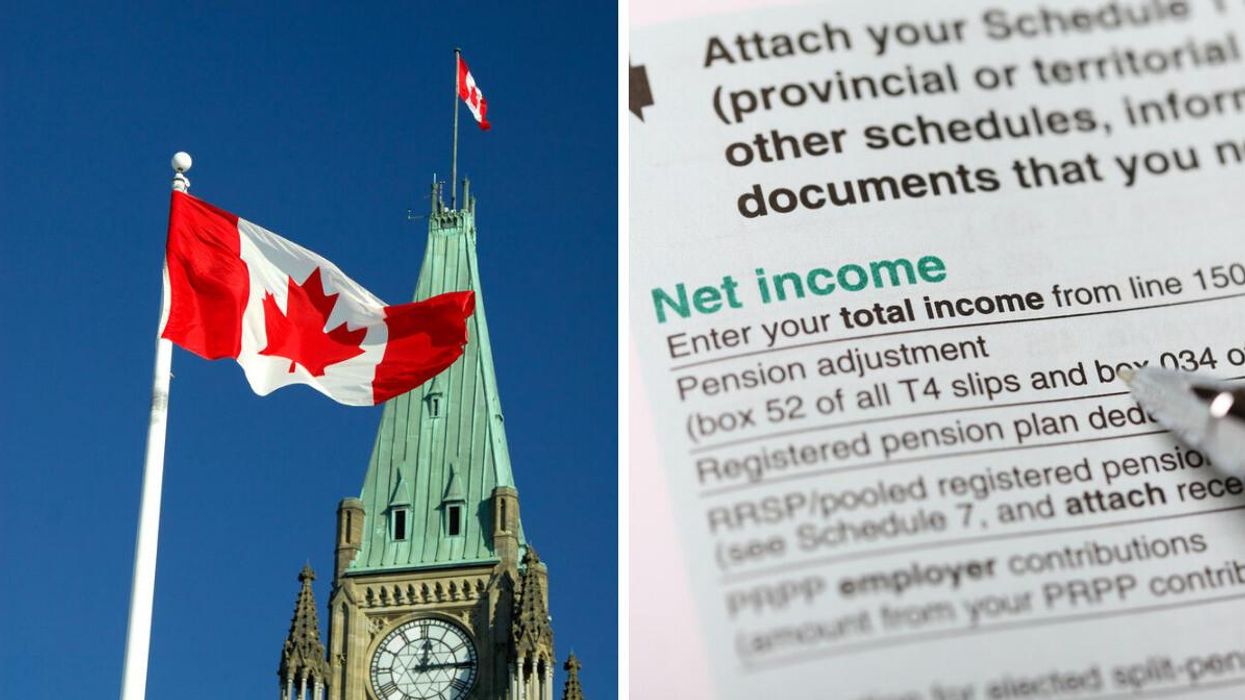These Are Canada's Tax Brackets For 2022 & Here's What It Means For Your Taxes
Are you clued up on what you'll need to pay? 💸

Canada's parliament. Right: A Canadian tax form.
We're well into the first quarter of 2023, and that means it's almost tax season in Canada.
To get a better understanding of how much you'll be paying to the government on May 1, the Canada Revenue Agency has shared a breakdown of Canada's income tax brackets for 2022.
Hopefully, this will give you some clarity on Canada's income tax brackets for the tax filing season in 2023.
What are the 2022 tax brackets in Canada?
Canada's federal tax system is marginal. This means your income will not necessarily be taxed all at the same rate.
According to a CRA table, the lowest tax bracket on a federal level in Canada is 15% in 2022 for taxable income under $50,197. That rate increases to 20.5% on taxable income between $50,197 and $100,392.
If you make between $100,392 and $155,625, the tax rate is 26%.
The tax rate for people who make between $155,625 and $221,708 is 29%, and the highest federal tax rate on taxable income is 33% for those who make more than $221,708.
For example, if you make $60,000, you will pay 15% in federal taxes on the first $50,197 and you will only be taxed at 20.5% for the remaining $9,803, rather than paying 20.5% on your total taxable income.
But, if you make what is called the "basic personal amount" or lower, you are given a full reduction in federal income tax.
This means you will be tax-exempt. In 2022, the basic personal amount was $14,398, according to the CRA.
That all being said, your tax situation can vary greatly depending on what province or territory you pay tax in.
After all, the federal tax rate is just a portion of what you're taxed, with your provincial tax rate being the other main factor.
When should you start preparing to file your federal taxes?
As many experts have said, it's always best to get on top of your tax filing as early as you can.
There are plenty of CRA resources to help you get your taxes in on time, including NETFILE, free volunteer tax clinics and other ways to get some help on your tax return.
Plus, there are a bunch of expert-recommended tax tips you can do on your own to get the most out of your tax return.
They include selling any losing investments, getting your receipts in order and staying on top of any new federal tax changes that took place in 2022.
When is the tax deadline in Canada for 2022?
If you're looking at your 2022 tax return, the deadline is going to be on May 1, 2023.
This is because the usual deadline, April 30, is going to be on a Sunday. So, make sure your tax return and payments are in by then or, at the very least, post-marked for that day.
Hopefully, with this information, you'll have a better idea about the taxes you owe for 2022.
This article's cover image was used for illustrative purposes only.
- Canada's New Luxury Tax Just Kicked In & Here's What's Going To Cost Even More ›
- 7 Ways Students In Canada Can Save Money At Tax Time, According To The CRA ›
- Canada's New Tax Brackets For 2023 Are Out & This Is How Much You'll Be Forking Out - Narcity ›
- These Are The Ontario Tax Brackets For 2022 & Here's What You Need To Know - Narcity ›
- This Is The 2022 Tax Deadline In Canada & Exactly What You Need To Submit On Time - Narcity ›
- 9 Big Changes The CRA Wants You To Know About That Could Impact Your 2022 Taxes - Narcity ›
- The CRA Told Me I Owed $31,000 In Tax Last Year & No, It Wasn't A Joke Or Scam (PHOTOS) - Narcity ›
